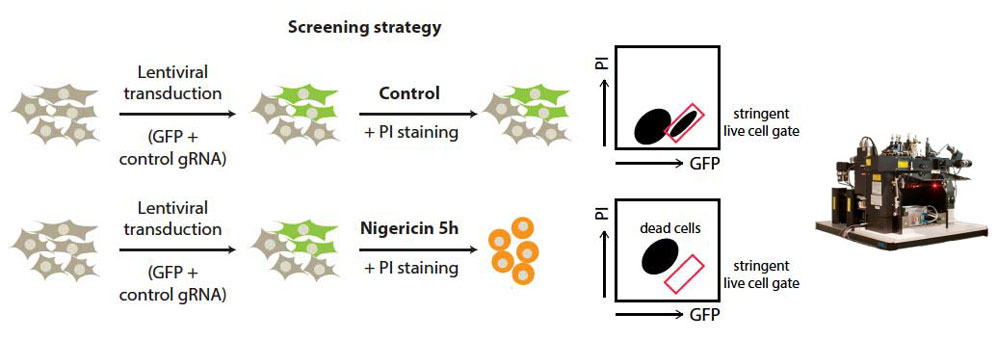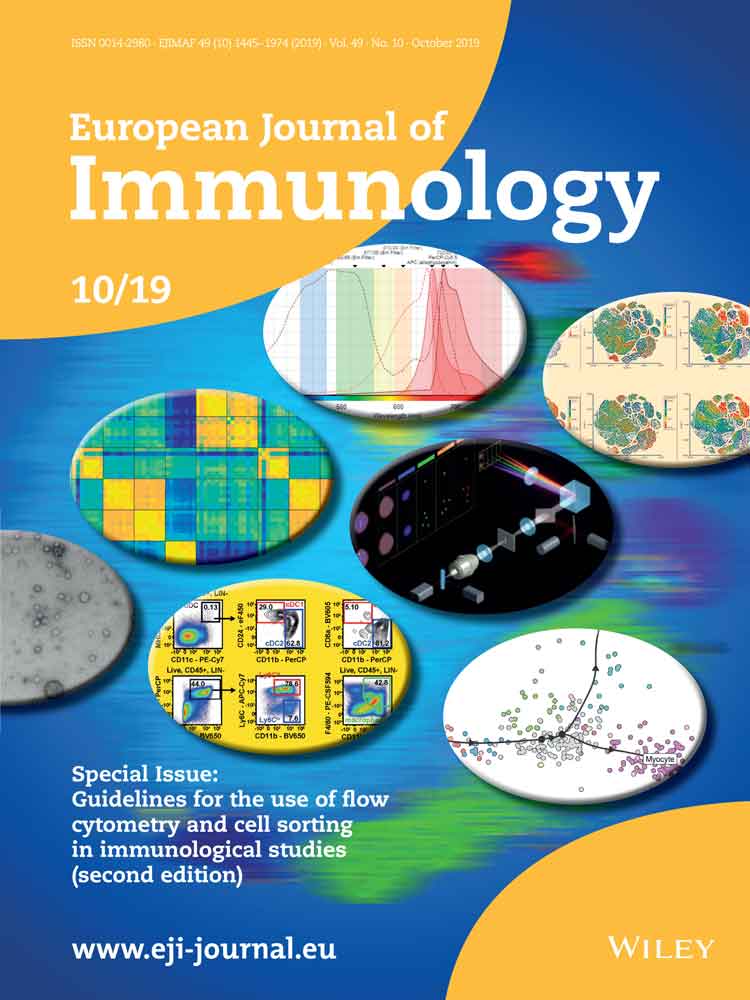A Genome-wide CRISPR Screen Identifies NEK7 as an Essential Component of NLRP3 Inflammasome Activation
The Journal of Biological Chemistry, 291, 103-109.
The mechanisms of NLRP3 activation are still poorly understood. Jonathan Schmid-Burgk and colleagues present new data on the identification of NEK7, which specifically functions upstream of NLRP3 activation. NEK7 was identified in an unbiased genetic screening approach, which employed the CRISPR technology to identify macrophages that were rendered defective in NLRP3 signal transduction.
The Flow Cytometry Core Facility supported the project by providing an optimized workflow for the separation of live cells on a single cell basis.







